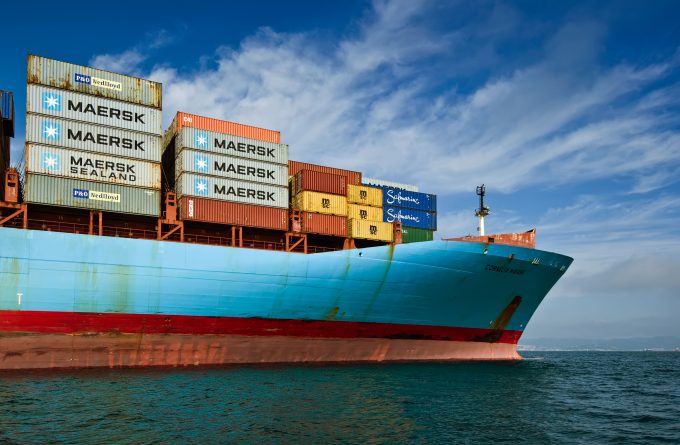Maersk appoints John Wetherell to head its global airfreight forwarding
Maersk has appointed John Wetherell (above) as its global head of airfreight forwarding. It is ...

Confounding the expectations of analysts, Maersk Line returned to profit in the first three months of the year.
The carrier posted a net gain of $32m, compared with a loss of $165m in the final quarter of 2015, on the back of a year-on-year 16% saving in unit costs and a 7% increase in volumes.
During this morning’s Q1 results conference call, Maersk Group chief executive Nils Andersen explained that the better-than-expected performance by the carrier was a consequence of its ongoing cost reduction programme, coupled with improved vessel utilisation levels, now averaging around 90%.
Maersk Line carried 4.7m teu in Q1. Mr Andersen rejected claims that the carrier had been overly aggressive in the market. He said the 7% hike in liftings over Q1 15 was more to do with the container line having conceded market share last year. Its strategy now being to “defend its market share” and “grow at least with the market”.
He added that the container line had added 2% capacity during the period, versus the first quarter of 2015, and that despite the increased number of containers carried, revenue was 20% lower than Q1 15, at $5bn, and its average freight rate plunged 26% to $1,857 per 4oft.
“What we are seeing,” said Mr Andersen, “is that contract rates will be lower and we will therefore try to be more exposed to the spot market.”
Maersk Line’s EBIT margin gap to its peers of about 5% was on par with its ambition, said the CEO, asked to comment on the parlous financial position of some its rivals.
“The competition is doing worse than we are and we assume their resilience is lower than ours, given that many have lost money for the last seven years,” said Mr Andersen.
Elsewhere in the Maersk group, APM Terminals made a profit of $106m in the quarter, compared with $190m in Q1 15, as throughput declined 5% to 8.7m teu.
Notwithstanding APMT’s divestments in the US terminals at Charleston, Jacksonville and Houston, and Gioia Tauro, Italy, West African business declined by 8% year-on-year and the operator was also hit by a continuing fall in throughput in Russia and Brazil.
Mr Andersen said the decline in throughput at terminals in oil-producing countries was also of concern, and this would only partly be compensated bythe acquisition of Grup Maritim TCB’s eight terminals at the beginning of March.
“We are a bit disappointed with the results for APMT,” he said, although he added: “It is still a very profitable business”.
Meanwhile, Maersk’s forwarding arm, Damco, continued on its recovery path, posting a profit of $2m for the quarter, compared with a loss of $9m in Q1 15 – a result “mainly driven by cost saving initiatives and growth in supply chain management activities”.
Overall, the Danish transport conglomerate posted a net profit of $214m for the quarter, an 86% decline on the $1.3bn recorded in Q1 15, earned from revenue of $8.5bn, which was down 19%.
“While market conditions remain challenging, we continue to adjust our cost base to the new conditions and maintain a good operational performance across our businesses,” summed up Mr Andersen.
Comment on this article